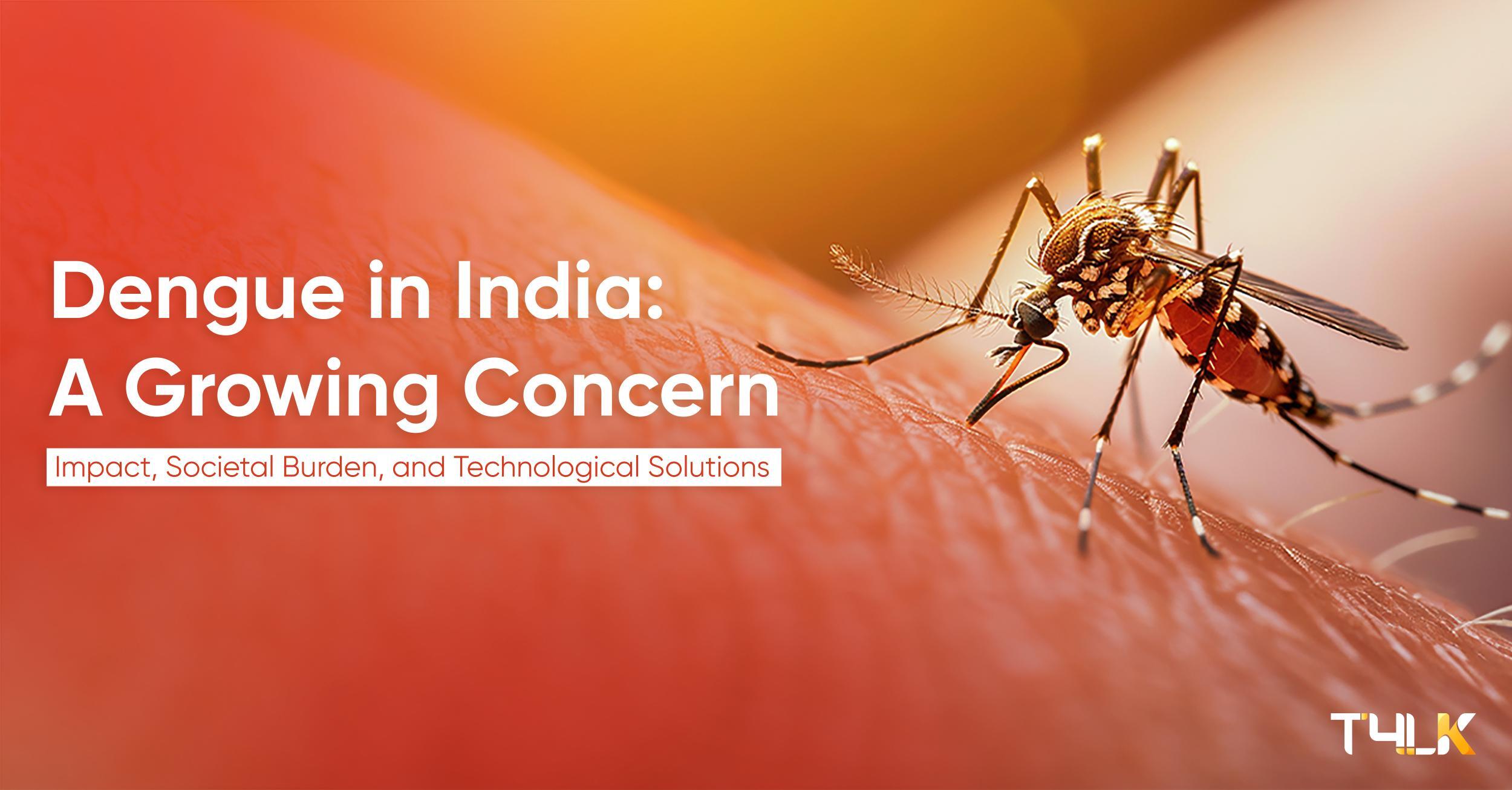Impact, Societal Burden, and Technological Solutions
“Karnataka is facing a record dengue outbreak, with cases exceeding 25,000 and 12 reported deaths this year.
A toll-free helpline, 1800-425-8330, is available for those seeking information or assistance with dengue-related issues”
Dengue, a mosquito-borne viral infection, has caused a significant health crisis in India during the monsoon season of 2024. With states like Kerala, Tamil Nadu, and Karnataka seeing a sharp rise in cases, hospitals are overwhelmed, and societal productivity is severely impacted. Dengue’s symptoms, such as fever, joint pain, and hemorrhagic complications, are often underestimated until they become life-threatening, resulting in a surge of disability-adjusted life years (DALYs) lost due to illness.
The Current Impact of Dengue in India
Tamil Nadu is facing a significant dengue outbreak, with 11,743 cases and four deaths reported. According to health department data, 58% of these cases are concentrated in ten districts: Chennai, Coimbatore, Krishnagiri, Tirupur, Tiruvallur, Theni, Madurai, Tirunelveli, Thanjavur, and Trichy. Chennai accounts for nearly 14% of the total cases, followed by Coimbatore with 11% and Krishnagiri with 8%.
Over the last two months, India has seen a rapid increase in dengue infections, driven by poor urban waste management and favorable conditions for mosquito breeding. Cities are particularly vulnerable, where the stagnant water in public places has contributed to the rise of the Aedes mosquito population. Dengue is not just a health problem; it’s an economic and societal one. The number of hospital admissions, absenteeism from work and school, and growing healthcare costs place a massive burden on communities and the healthcare system. Additionally, it contributes to the daily loss of thousands of DALYs.
The Role of Predictive Intervention in Managing Dengue: A Technology-Led Approach
One of the most dangerous aspects of dengue fever is its ability to cause internal bleeding, a symptom that can escalate quickly if left untreated. Early detection is key to preventing complications like Dengue Hemorrhagic Fever (DHF) or Dengue Shock Syndrome (DSS). Our app’s platelet detector feature is designed to identify the severity of the infection early, allowing for timely intervention. This tool works by analyzing a patient’s platelet levels, a critical indicator of dengue severity.
How Predictive Intervention Can Improve Dengue Management
Dengue infections, if not managed effectively, can quickly turn life-threatening. Our severity predictor uses machine learning models to analyze symptoms and predict the future progression of the disease.
After the onset of dengue, the predictor evaluates the patient’s health status, considering factors such as fever intensity, platelet count, and signs of internal bleeding. It generates a predictive score indicating how severe the condition might become over the next three days.
This not only helps caregivers prepare for potential complications but also guides them to tailor treatments based on predicted outcomes, reducing the risk of fatalities.
Platelet Detection through Petechiae Imaging
A breakthrough feature of our app is its ability to determine platelet count from petechiae images. Petechiae, small red spots that often appear inside the mouth due to internal bleeding, are an early warning sign of declining platelet counts. By scanning the upper mouth area using smartphone cameras, the app can assess whether a person is at risk of a severe dengue infection.
Key Features of the Platelet Detector:
- Upper Mouth Condition Check: The app scans the mouth for petechiae and informs users if they are infected and to what degree the condition is severe. This feature makes early detection accessible, even before a hospital visit.
- Track Patient Progress: For healthcare providers, the app acts as a monitoring tool to track patient progress over time. By continuously analyzing symptoms and platelet levels, it helps doctors understand if the current treatment is effective and whether adjustments are needed. This data-driven approach ensures a more accurate, personalized treatment plan.
Predicting the Severity of Dengue: A Life-Saving Tool
Another critical tool within our ecosystem is the Dengue Severity Predictor. After the onset of infection, the app provides a real-time prediction of how the disease might progress over the next three days. Using patient data such as fever duration, fatigue levels, and past medical history, the app’s predictive model offers a comprehensive view of the likely trajectory of the disease. This empowers both patients and doctors to take preemptive measures to mitigate the risk of complications.
Benefits of the Severity Predictor:
- Current Status Check: Users can input their symptoms and immediately receive a prediction of their condition’s severity. This allows for quick decision-making, guiding patients to seek urgent medical attention if necessary.
- Three-Day Forecast: The app uses algorithms to estimate how severe the patient’s condition will become in the next three days, allowing caregivers to preemptively adjust treatment and avoid life-threatening scenarios.
In conclusion, our app integrates predictive intervention with practical, real-time tracking, providing an accessible and efficient solution for managing dengue.
Saving 10,000 DALYs per Day: The Broader Impact
Together, these apps have the potential to save 10,000 DALYs daily by encouraging early detection, timely medical interventions, and community-level prevention. By catching cases earlier and providing real-time diagnostics, both apps offer a lifeline to communities grappling with the dengue epidemic. These tools not only reduce hospital admissions but also prevent severe complications that can lead to long-term disabilities, contributing to the overall well-being of society.
Conclusion
Dengue remains a significant threat to public health in India, but with the use of technology-driven tools like the Platelet Detection and Predicting the Severity, we can make substantial progress in managing the epidemic. These innovations empower individuals, enable early diagnosis, and encourage community-level prevention—leading to a measurable reduction in the societal burden of dengue. By saving 10,000 DALYs per day, these apps offer hope for a healthier future, transforming how we combat this persistent public health challenge.



